17 Mar “The Production Line” – My own Chess Variant for Children
There are more than 2000 games inspired by chess, which are called “chess variants”, and are usually designed to be played with the same equipment. Together with mini games (played on smaller boards), some of those variants have become popular as fun educational tools, that give children an extra motivation to learn chess and help them understand the game. “Bughouse” (2 boards, 4 players), “Hand and Brain” (1 board, 4 players), “Losing Chess” and “Progressive Chess”, are some of the children’s favorites.
In 2014, I participated in the very interesting and successful “London Chess and Mathematics Conference”, which took place between December 6-7, at Olympia London. Among others, the rich and various program included an unusual “New Game Design Competition” which I found fascinating and decided to join. In order to enter the competition, I needed to submit a new game, suitable for primary school students, which could add some variety to chess instruction at school. The game, which should not have been published before, had to make use of the chess board and pieces. I created it, tried it out in the classroom and travelled to London with my students’ positive feedback in my luggage. The “Production Line Game” received the “First Commendation” (4th place) out of 20 entries.
Game Rules
This is a chess variant where pieces do not appear until they are “produced” by advancing a number of pawns to the fourth row.
- SETUP
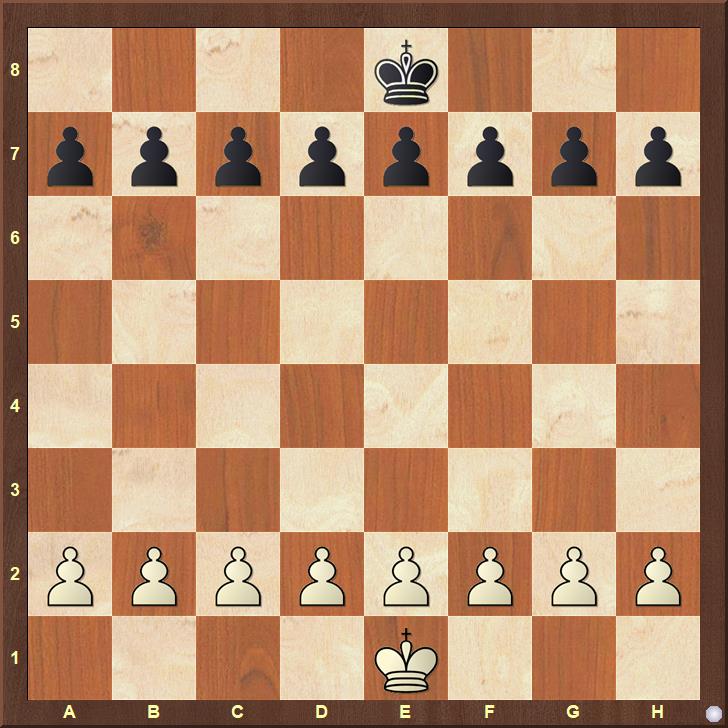
Place the King and eight Pawns on their starting positions.
2. PIECES AND MOVES
The pieces move as in chess. Although there are no pieces at the beginning of the game, they can be created through being ‘produced’ or by a pawn being promoted.
3. THE PRODUCTION LINE
The 4th rank (5th for black) is the “production line”. The number of white Pawns on the production line is the production value. Pieces can only be produced if there is sufficient production value i.e. Rook=5, Bishop=3, Knight=3. A piece production counts as a move and therefore it cannot occur right after another move by the same player. For the same reason, a move cannot be played right after a piece production.
To produce a piece, do the following:
- Place the produced piece on either of the two available starting squares – on the other side of the board.
- Return the relevant pawns to their starting squares – which must be empty.
If the above two conditions cannot be met, then the piece cannot be produced. For example, if white to play has pawns on b4, d4 and h4 (Production Value = 3) then he can place a Bishop on c8 or f8 or a Knight on b8 or g8 square. Those three pawns must be replaced on their starting positions to complete the move.
Queens cannot be produced since a value of 9 points would be required, but they can appear on the board through pawn promotions.
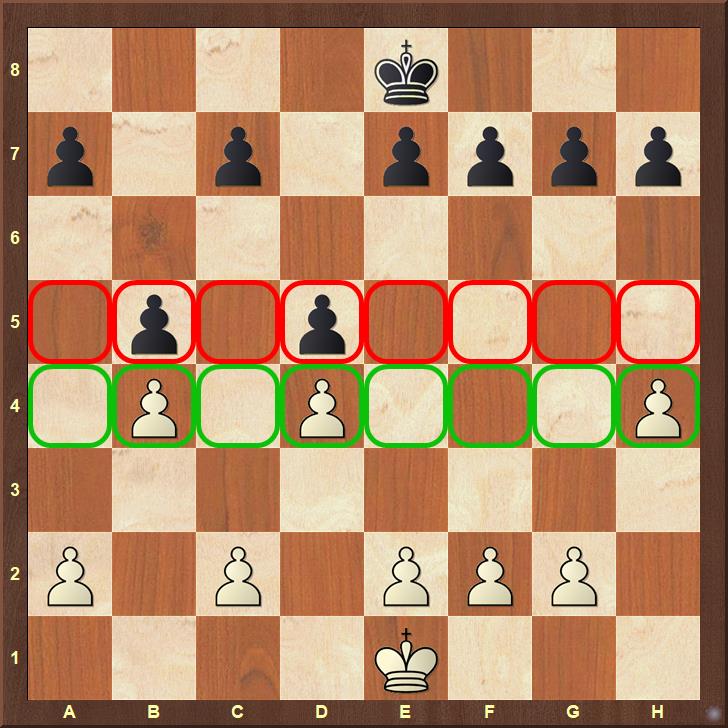
By moving his pawn to h4 White has reached the third pawn to his production line. That means he can opt to produce a Knight or a Bishop, which have a value of 3 points. However, since he just completed the move h4, he needs to wait for the next turn.

Black replied with f5 and White can now choose whether he wants to produce a piece or not.
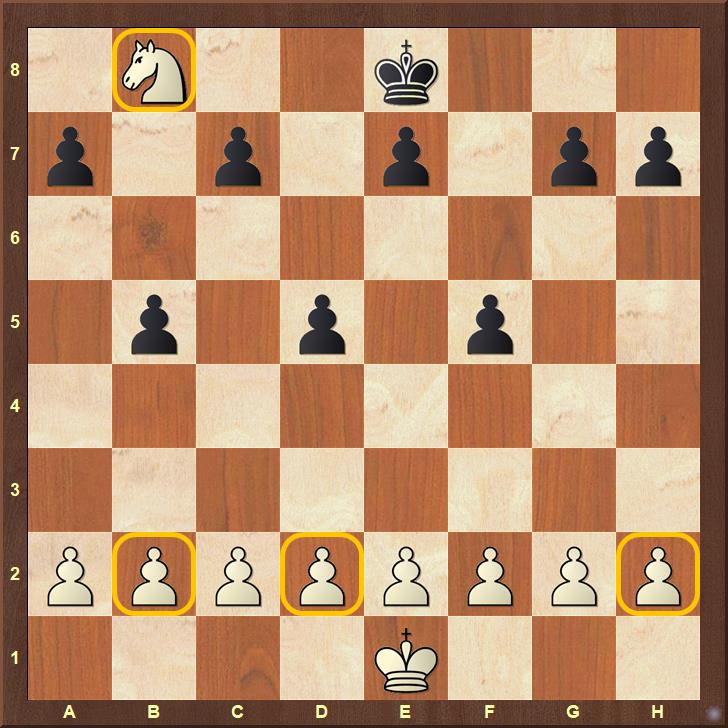
White decided to produce a Knight on b8. For the move to be completed, he had to return all three pawns to their starting squares. If even one of those squares (b2, d2 or h2) was occupied, he would not have been allowed to produce the Knight. That being said, there are no restrictions concerning the availability of squares on the 3rd rank.
4. OBJECTIVE
The objective of the game is the same as in chess – to get checkmate.
5. EXAMPLES
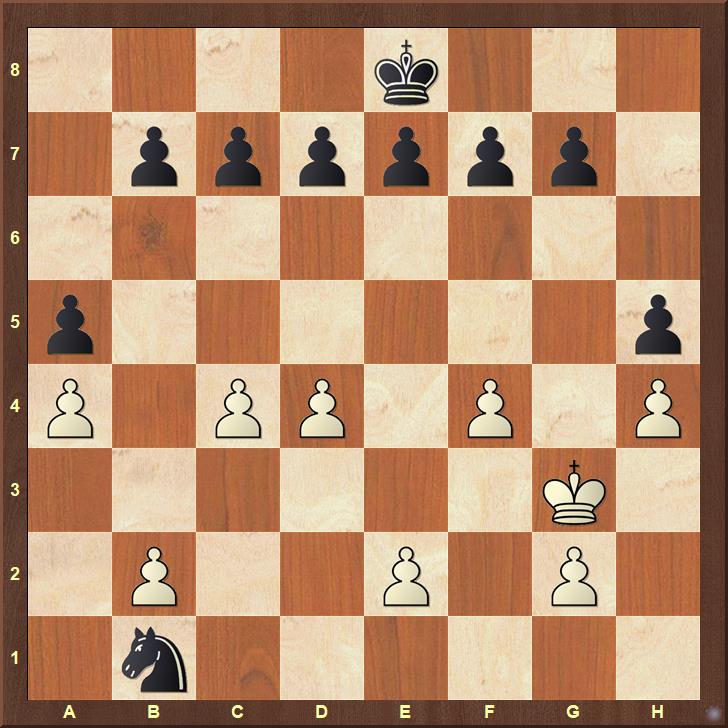
Black to move. His opponent is ready to use those five pawns to produce a Rook and deliver a checkmate to Black King from a8 or h8. Creating a window for the King’s escape by moving a pawn (d, e or f) is one option. Another option is the move Nd2 which prevents the d-pawn from returning to d2 and hence, does not allow the production of the white Rook for the moment.
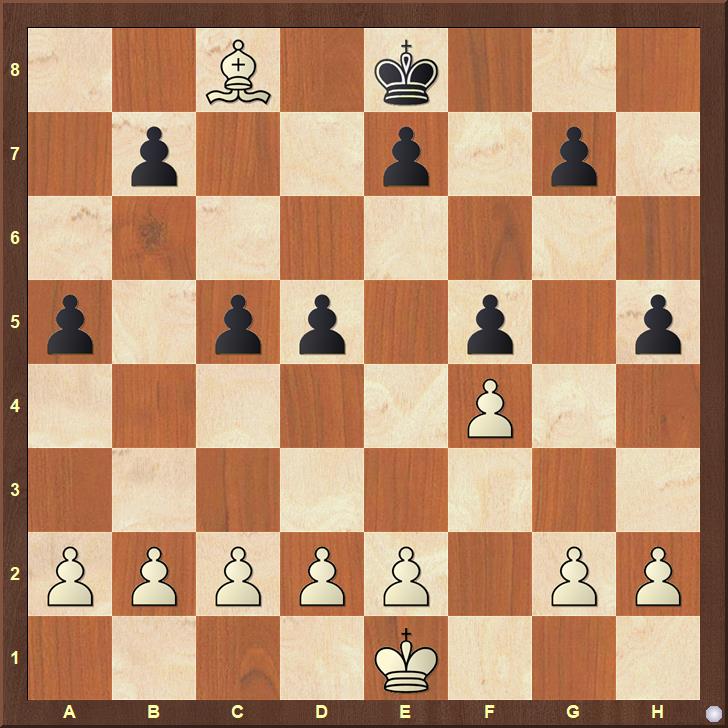
Black aims to produce a Rook on a1 or h1 but it is White’s turn to move. Although the King can escape from checkmate via f2, it would be even better to prevent the Rook production. Which pawn should the Bishop take, b7 or f5? Correct, it should capture the f5-pawn which is already on the production line. Consequently, Black does not have enough production value for a Rook.
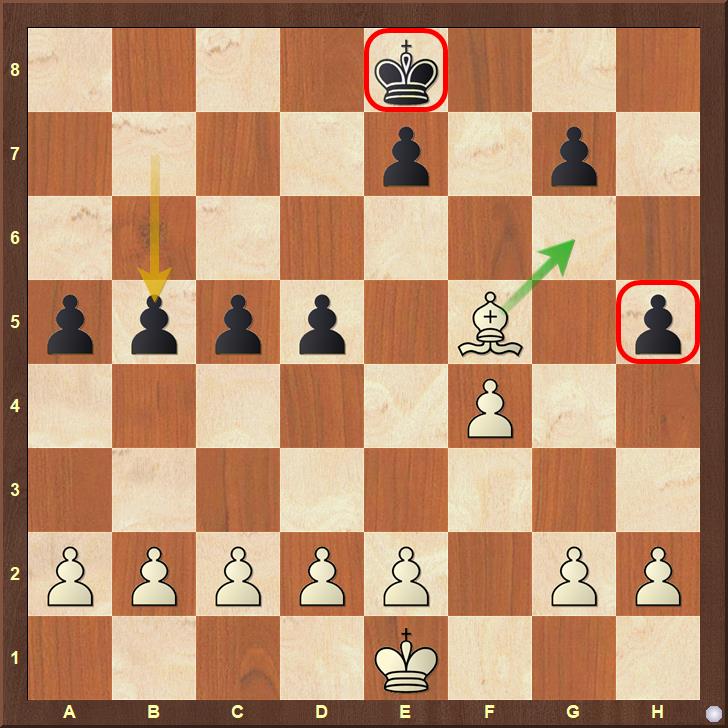
Moreover, if Black continues with b5, insisting on producing a Rook, White has a new defensive resource available. The move Bg6+ creates a double attack and after the King moves away, the Bishop captures the h5-pawn and stops the Rook production once more.
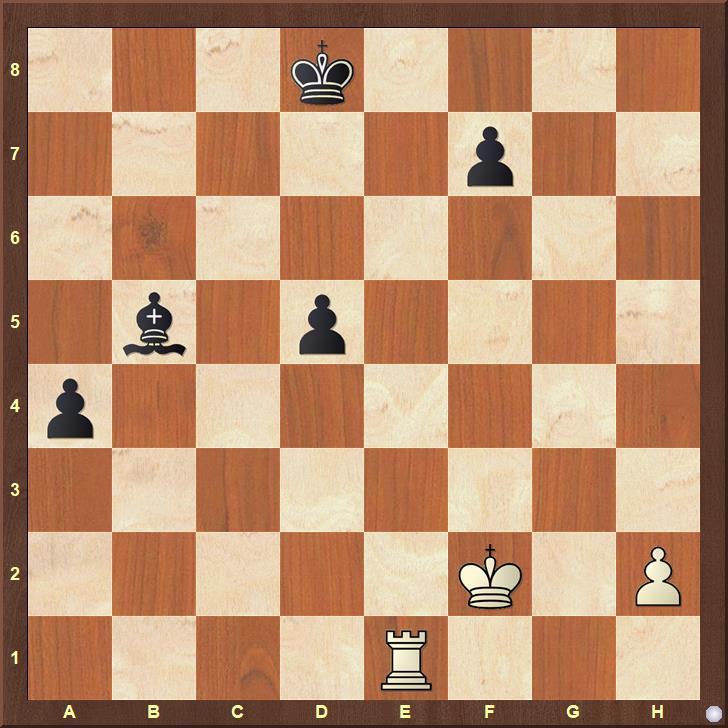
Neither White, nor Black have enough pawns to produce another piece (the a4-pawn cannot move backwards to the 5th rank, the production line of Black’s). The game continues as a standard Chess ending.
This fun method of piece production leads to strange but relatively simple positions with interesting defensive nuances e.g. against the creation of pieces. Students also practice in creating plans, making decisions in -typical for the game- dilemma situations, such as “To produce a minor piece or to prepare the ground for bringing a Rook to life”, “Is it the time to attack or to defend” etc.
Another interesting feature of this variant is the fact that pieces are only produced on the opposite side of the board, and as a result, children get used to backward moves of the pieces. This is more important than it sounds, even for more advanced learners.
Try it out!

